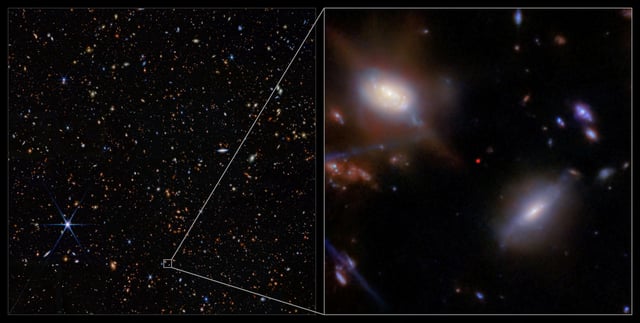Overview
- The James Webb Space Telescope identified JADES-GS-z13-1, a galaxy from 330 million years after the Big Bang, making it one of the earliest known galaxies.
- Strong Lyman-α emission from the galaxy suggests it is surrounded by a bubble of ionized hydrogen, indicating cosmic reionization began earlier than previously believed.
- Scientists are investigating whether the ultraviolet radiation originates from massive, hot stars or a supermassive black hole within the galaxy.
- The discovery challenges existing theories on early galaxy formation and the timeline of reionization, prompting a reevaluation of cosmological models.
- Further observations are planned to explore the nature of the galaxy and the source of its unexpectedly strong ultraviolet radiation.

